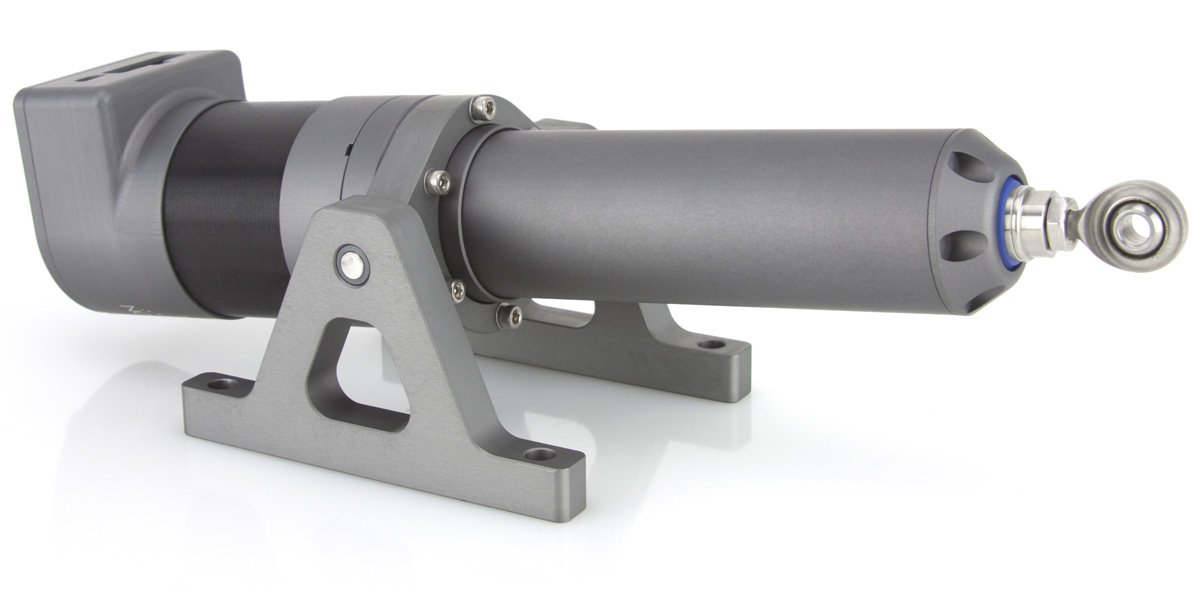Linear cylinders are mechanical actuators that generate linear, rather than rotating, motions. Electric linear cylinders have gained increasing popularity in the automation and robotics industry due to their numerous advantages over traditional pneumatic and hydraulic cylinders. With advances in motor, controller and battery technologies, electric linear cylinders are poised to play a key role in the future of automation.
What are Electric Linear Cylinders?
An electric linear cylinder consists of an electric motor, a transmission system, an extendable rod and a position sensing system. The electric motor provides the driving force, which is transmitted to the extendable rod via gears, belts or ball screws. This causes the rod to extend or retract in a linear motion. Sensors provide position feedback to controllers, enabling precise control over the rod’s motion.
Electric linear cylinders come in a variety of designs optimized for different applications. Direct drive cylinders couple the motor directly to the rod for high speeds and forces. Belt drive cylinders use a toothed belt transmission for lower speeds but higher stroke lengths. Ball screw drive cylinders offer smooth, accurate motion via a ball screw mechanism. Mini and compact cylinders are suited to tight spaces whereas heavy-duty cylinders can handle large payloads and forces.
Advantages Over Traditional Actuators
Electric linear cylinders provide several advantages in automation applications compared to pneumatic and hydraulic cylinders:
Precision and Accuracy: With closed-loop servo control, electric cylinders can achieve sub-micron accuracy and repeatability. Sensors provide real-time position feedback.
Speed and Responsiveness: Electric cylinders have much faster response times than pneumatic/hydraulic alternatives due to absence of compressible media. Speeds up to several meters per second are possible.
Low Maintenance: Electric cylinders require no compressed air/hydraulic supplies. Long service intervals and minimal downtime reduce total cost of ownership.
Clean Operation: Pneumatic/hydraulic fluids can leak and contaminate environments. Electric cylinders operate cleanly without these issues.
Flexibility and Portability: Electric cylinders can operate in any orientation and location. Ease of miniaturization enables use in diverse applications ranging from packaging to medical devices.
Predictable Performance: Electric motor characteristics remain consistent, enabling predictable, calibration-free performance over the long term.
Applications in Automation and Robotics
The unique capabilities of Electric Linear Cylinders have enabled their use across various automation applications:
Material Handling: Precise insertion and placement of parts in assembly lines. Automatic guided vehicles rely on electric cylinders for lifting/tilting mechanisms.
Packaging Machinery: Pick and place systems for products, lidding and sealing of containers. Inspection devices use miniature electric cylinders.
3D Printing: Multiaxis motion systems with sub-micron repeatability required for additive manufacturing. Elevator systems for build platforms.
Medical Devices: Surgical tools, rehabilitation robots, diagnostic equipment rely on lightweight yet highly precise electric cylinders.
Robotics: Electric cylinders enable smooth, backdrivable joint motion in collaborative robots. Exoskeletons, prosthetics and orthoses also employ them.
Semiconductor Manufacturing: Wafer inspection machines, microlithography stages require nanometer scale motion accuracy achieved by electric cylinder actuators.
Future of Electric Linear Cylinders
As industries shift towards mechatronics integration, demand for electric cylinders will continue growing at a rapid pace. Advancements in motor and control technologies will drive improvements in performance metrics like speed, payload and precision. Wider miniaturization will facilitate novel applications in medical, space and micro-robotic domains. New cylinder designs optimized for collaborative robots and exoskeletons will emerge. Integrated cylinder-motor modules and modular actuated joints will simplify designs. With their clean, precise and maintenance-free operation, electric linear cylinders are poised for widespread adoption across diverse industries, engineering collaborative robots of the future.
Electric linear cylinders address key limitations of traditional hydraulic and pneumatic cylinders through servo control enabled high precision, dynamics, flexibility and clean operation. They have thus gained increasing acceptance in contemporary automation applications ranging from material handling to medical devices. Continuous technology progress will further augment electric cylinder capabilities, accelerating their role in shaping next generation collaborative robotics and advanced mechatronic systems. Overall, electric linear cylinders represent a promising actuation solution for the rapid progress of robotics and industrial automation worldwide.
*Note:
1. Source: Coherent Market Insights, Public sources, Desk research
2. We have leveraged AI tools to mine information and compile it

